A hundred years ago, coming to West Texas was the ultimate adventure … Roughing it was not an abstract concept on these sketching trips. The San Angelo Museum of Fine Arts’ exhibit, “In the Steps of the Master,” tells the story of Frank Reaugh and the adventurous artists who traveled with him.
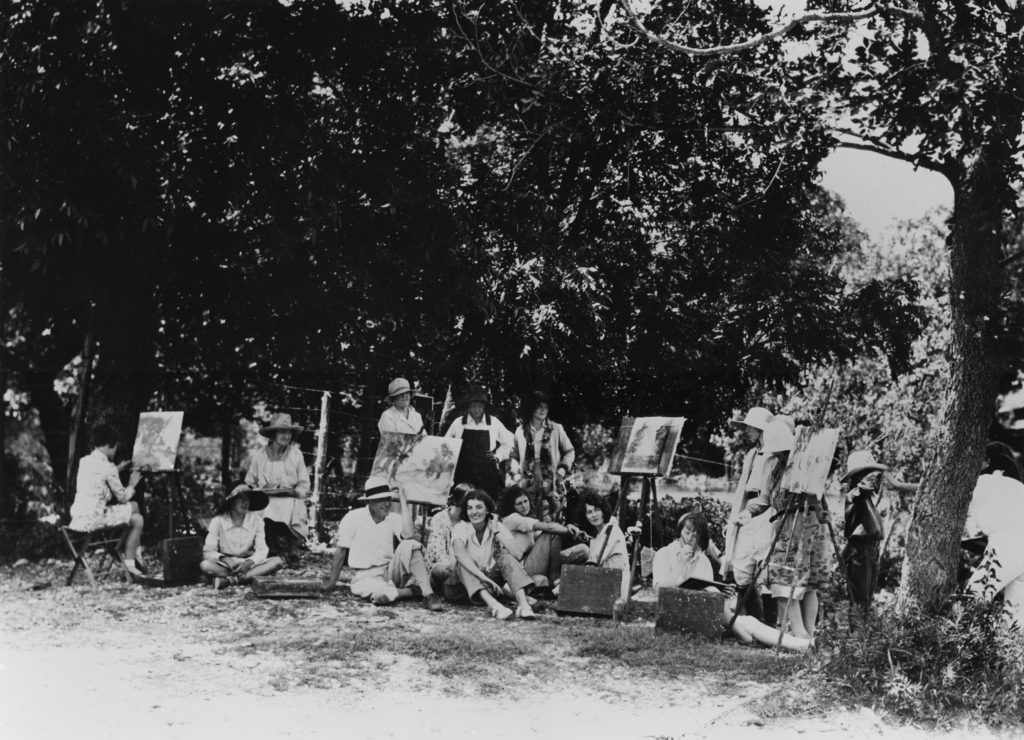
In the Steps of the Master:
SAMFA tells the story of a West Texas adventure
BY LINDA THORSEN BOND
A hundred years ago, coming to West Texas was the ultimate adventure. Artists from the big cities like Dallas and Fort Worth piled into a Model T Ford touring bus that rattled like the Cicada for which it was nicknamed. Their luggage was sparse, stuffed with pastels and easels instead of fancy clothes. Roughing it was not an abstract concept on these sketching trips.
The artists who followed Frank Reaugh (pronounced Ray) to the Concho River dreamed of capturing the Wild West before it disappeared. They had their hearts set on seizing the kaleidoscopic shades of the sunset, the vanishing herds of Longhorns. They threw their lot in with “the Dean of Texas Painters” and sometimes they made masterpieces.
For 20 years, the Cicada took students on annual sketching trips that ranged from the Texas Panhandle south to the Big Bend and west to New Mexico and Arizona. An artifact of Reaugh’s legacy was that some of his students founded the Texas Artists Camp in 1921 in the San Angelo area where students stayed at a simple Baptist encampment near Christoval.
The San Angelo Museum of Fine Arts’ exhibit, “In the Steps of the Master,” tells the story of Reaugh and the adventurous artists who traveled with him. SAMFA’s exhibit features works that were completed by Reaugh and his students, many of whom became prominent Texas artists in their own right. There are 31 works displayed including many that were created en plein air (in the open air) and a video of Reaugh’s multimedia performance, “Twenty-four Hours with the Herd,” using seven of his paintings with music and narration.
The SAMFA exhibit is on display until April 11, but the genetic legacy of Reaugh and his students is connected in an exhibit called “Light, Color, Beauty” that will be on display until June 27. Six paintings the museum purchased for their permanent collection came from artists who traveled to San Angelo to paint en plein air just like Reaugh’s students did a hundred years before them.
EnPleinAir Texas is the direct descendant of Reaugh and his students’ adventures. SAMFA’s annual event brings artists to San Angelo who are drawn by the austere beauty and uncommon landscapes of West Texas. They may not travel by Cicada, but they share artistic dreams that began over 100 years ago.
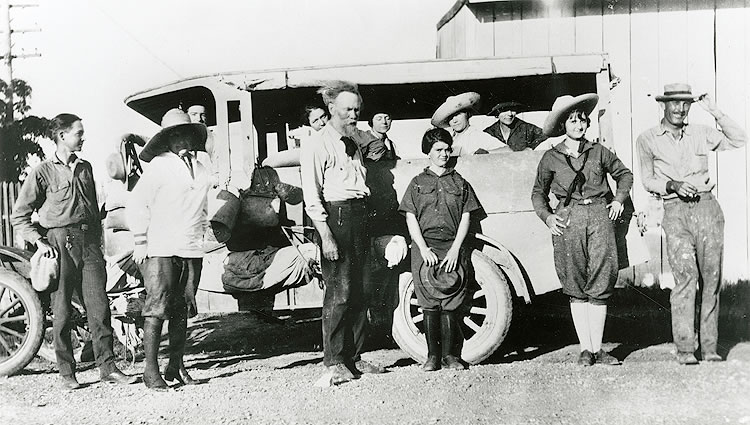
The Master
Reaugh was born in Illinois in 1860. He and his family settled on a farm near Terrell in 1876 then moved to Oak Cliff near Dallas in 1890. He began sketching cattle drives and roundups, concentrating on small plein air pastel sketches of the Texas Longhorn. In the course of his life from 1860 to 1945, Reaugh created 7,000 works, concentrating on small pastel sketches of the Texas Longhorn.
He said, “No animal on earth has the beauty of the Texas steer.” His mother encouraged him to paint true-to-life forms. He said, “I would sit in the midst of the herds to study their form, the workings of their muscles, their character and habits, their characteristic spots and markings and their wonderfully rich and varied colors.”
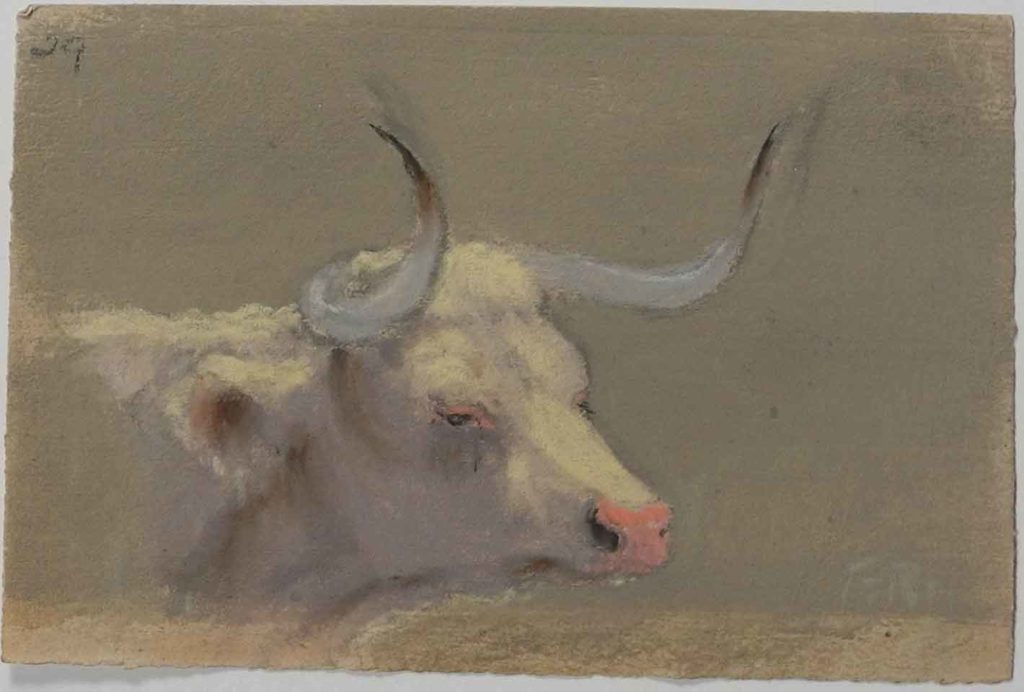
He helped found the Dallas Art Society which developed into the Dallas Museum of Art, the Frank Reaugh Art Club and the Striginian Club. Some of his paintings are displayed at the Texas State Capitol, the Panhandle-Plains Historical Museum, the Southwest Collection/Special Library Collection at Texas Tech University and the Harry Ransom Humanities Research Center.
Because of his travels to sketch, he invented tools for artists including a folding lap easel and a compact carrying case for pastels. His own brand of pastels was blended to match the native flora of the West and cast in a hexagonal shape for ease of handling and packing in the field.
Reaugh said, “Pastels are particularly suited to outdoor sketching. One advantage is readiness. The palette is set. The colors are mixed. All this makes for speed: the essential in landscape sketching where effects are fleeting. Nature’s beauty of design is matchless. Man’s invention compares with it much as his feats of engineering compare with the motion of the stars.”
The Students
As early as 1890 Reaugh began taking students west on sketching trips on horseback, mule and wagon. He started an art school in Dallas in 1897. He got the Ford Model T touring bus he named the Cicada in 1920. There was no shortage of men and women who piled into it despite the hard wooden seats and even harder accommodations on the road.
Howard Taylor, Executive Director of SAMFA, said, “Imagine those men and women, traveling in an uncomfortable touring bus on dusty roads. They really roughed it. And they came to our rich and beautiful West Texas landscape and it inspired them to create art. I would have liked to have been there. Those trips with Reaugh were the spark that helped inspire much of the art of Texas today.”
In 1921 one of Reaugh’s students, Mollie Crowther, co-founded the Texas Artists Camp at Christoval. Crowther moved to San Angelo from Fort Worth and promoted professional fellowships and instruction for the visiting artists. In the seven years of its existence, the camp became a leading institution in the Southwest. Crowther, who was known for her bluebonnet paintings, literally gave her life for the camp, dying of heat stroke while camp was in session in 1927.
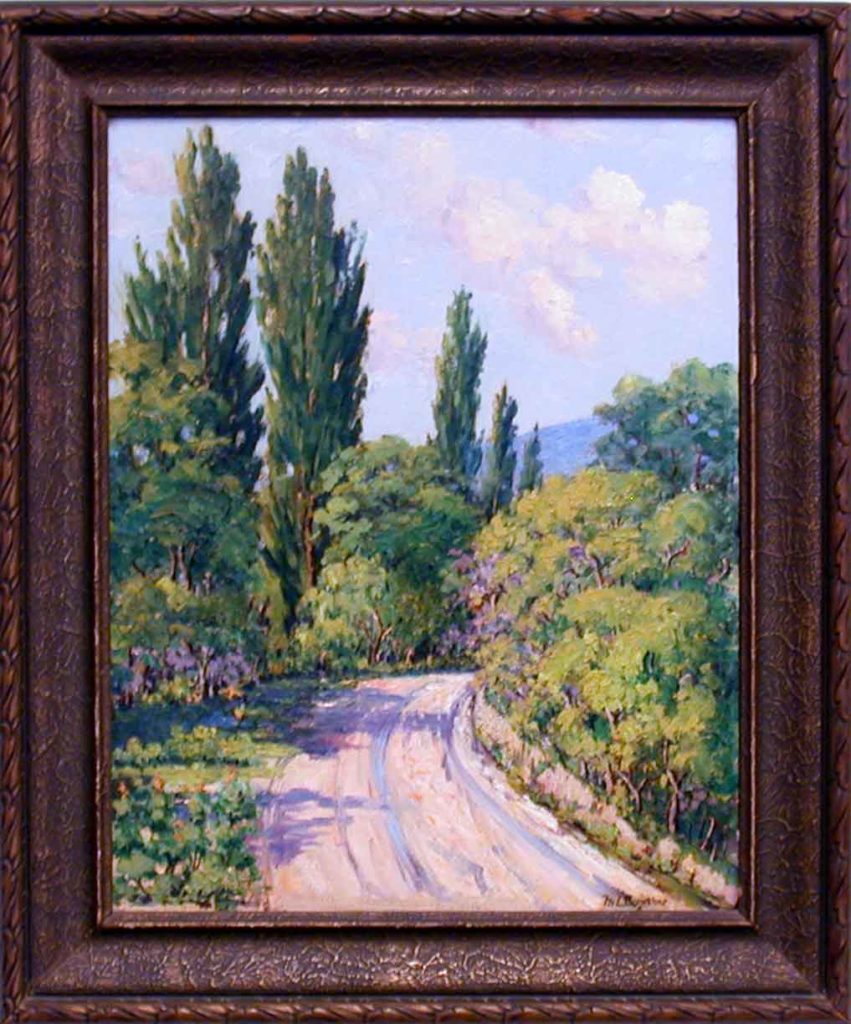
Helen King Kendall started studying with Reaugh when she was 16, helped Crowther run and promote the Texas Artists camp and was an instructor. When the camp closed, she taught lessons in her San Angelo studio. She was also the second president of the San Angelo Art Club. Her work was exhibited at the Frank Reaugh Art Club in Dallas and at the Pabst Galleries in San Antonio. The San Angelo Art Club’s Kendall Gallery is named for her.
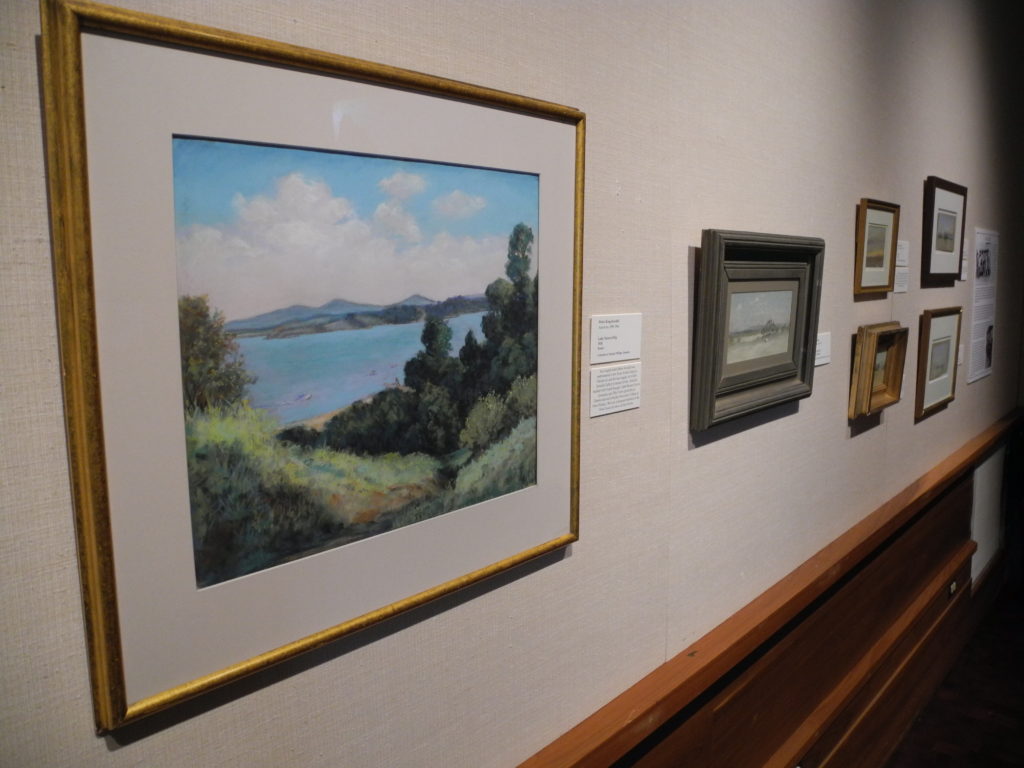
Well-known artists who studied with Reaugh include Reveau Bassett, Florence McClung, John Douglass, Alexandre Hogue, Edward G. Eisenlohr, Olin Travis, and Josephine Oliver. Several became part of the Dallas Nine.
The Descendants
If a genealogical study could be done of Reaugh’s influence, one of the descendants would surely be EnPleinAir Texas. The kind of adventure that Reaugh and his students enjoyed has thrived in San Angelo for the past eight years.
The current annual event started with San Angelo artist Barbara Rallo. Like Kendall, Rallo was a president of San Angelo Art Club. She had been having her own arts adventure once a year since 1998 when she and Treva Boyd began traveling to the south of France to paint with Charleston artist Margaret Hoybach.
“I had no idea that what we were doing was painting en plein air in France,” Rallo said. “Then my husband Joe and I went to eastern Maryland to the largest plein air event in the country and I fell in love with it. I was planning a three-day workshop for artists here when I realized San Angelo would be perfect for a big plein air event. The people, the environment and the enthusiasm seemed right. I heard about this rickety old Model T with people sitting on wooden seats, traveling all this distance. Then I learned about the Texas Artist Camp in the 1920s and all of it fell in place. The camp was quite primitive; they came to sketch and paint West Texas. I felt these early artists were the inspiration of what should be here in San Angelo today.”
In 2013 Rallo approached Taylor at SAMFA, “because I just knew we had to do it!” and pitched the idea of a plein air event in San Angelo.
It didn’t take long for Taylor to connect “the itinerant artists of the Texas art tradition in Reaugh’s Cicada” to the need for EnPleinAir Texas in San Angelo. The idea that it was connected to Reaugh’s sketching trips to West Texas made a complete circle for him.
“The museum is the headquarters for the Center for the Advancement and Study of Early Texas Art,” Taylor explained. “When we discovered the history of the unique arts colony here, we realized this is part of a bigger picture in the Texas art tradition.”
Rallo said, “From an artist’s standpoint, plein air makes you a better artist because your brain and eye are seeing directly rather than looking at a photograph. En plein air is the spirit of painting outdoors with like-minded artists, rather than alone in a studio. In the public side of it, you are documenting a moment in time – maybe you’re preserving a historic building, or a barn that is almost falling down. It’s capturing the way something looks in that moment that it has struck your heart.”
She feels EnPleinAir Texas is in the spirit of Reaugh and his students.
“The artists today come in the spirit of those artists,” Rallo said. “They are traveling to wild West Texas, to the authentic West. They get to paint on private property, on the ranches, on the river. What we may take for granted they find unexpected and even exotic. If people don’t think West Texas is full of beauty, they should see the paintings that are done at EnPleinAir Texas. The artists see colors we pass by because we look at them all the time. They see the light bouncing off the land; they see how the land looks in the sunset, and they remind us that there is nothing ordinary about our West Texas landscape.”
The two exhibits at SAMFA, “In the Steps of the Master” and the plein air works in “Light, Color, Beauty” trace the family tree of the art of today and the art of yesterday. It all began over 100 years ago with a Model T touring bus, bumping its way to an adventure in West Texas. It continues with the artists who seek that same adventure today. The results are rich, beautiful art that captures the spirit of painting in the open air. For more details, please visit samfa.org.
Visit EricRhoads.com to find out all the amazing opportunities, including:
– Online art conferences such as Plein Air Live
– New video workshops for artists
– Incredible art retreats
– Educational and fun art conventions, and much more.
> Subscribe to Plein Air Today, a free newsletter for artists
> Subscribe to PleinAir Magazine so you never miss an issue



